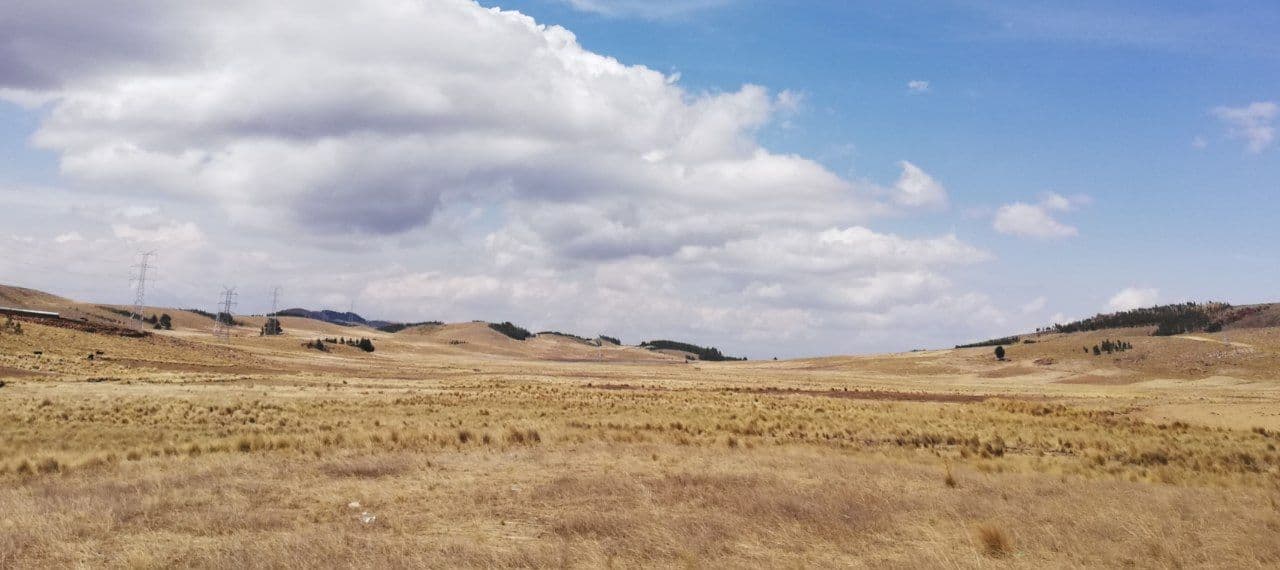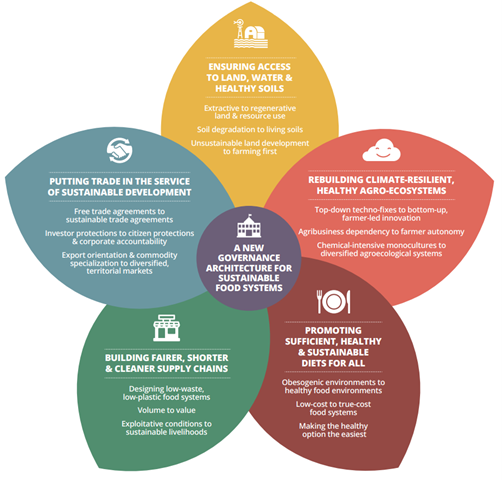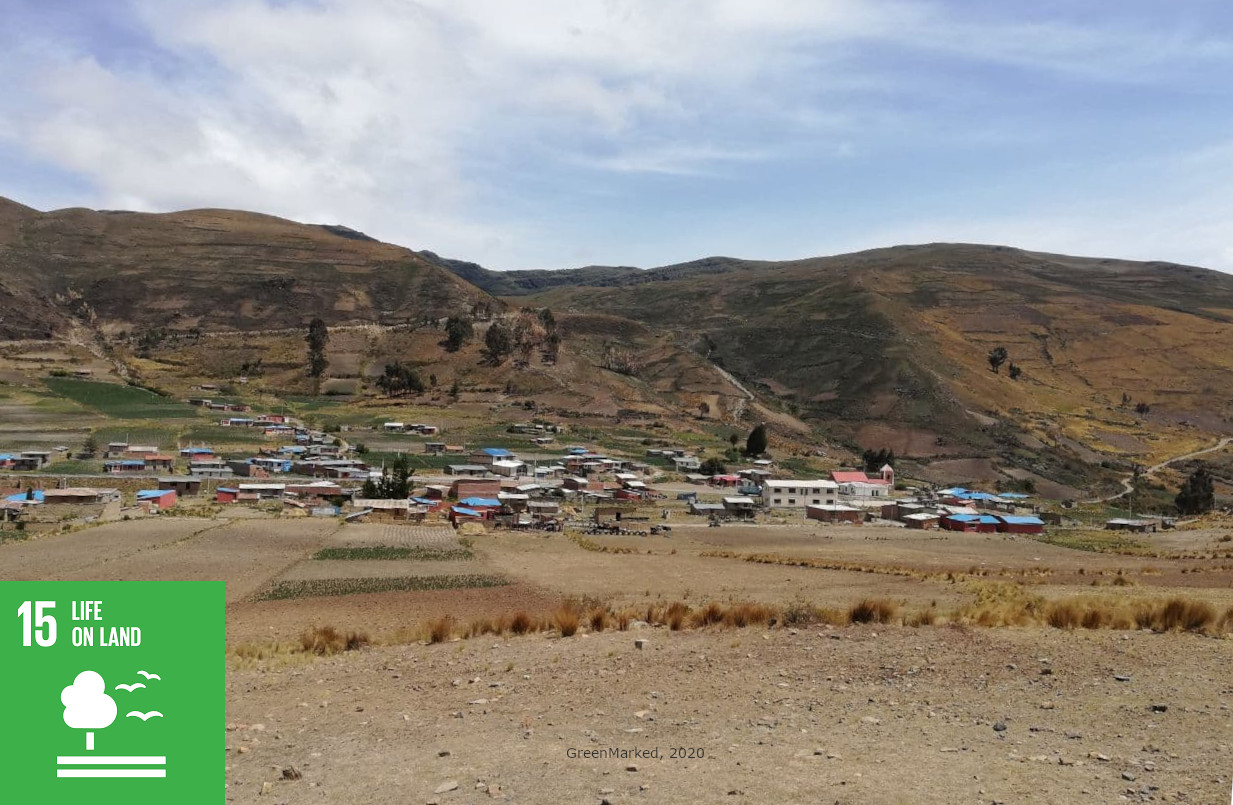27 November 2020
“Protect, restore and promote sustainable use of terrestrial ecosystems, sustainably manage forests, combat desertification, and halt and reverse land degradation and halt biodiversity loss.” [1].
This is what the United Nations defined as the fifteenth Sustainable Development Goal (SDG): Life on Land.
“Every year, 13 million hectares of forests are lost, while the persistent degradation of drylands has led to the desertification of 3.6 billion hectares, disproportionately affecting poor communities” stated the United Nations Development Program [1]. In general, land degradation also leads to loss of biodiversity [2].
Why should we act?
It is widely accepted that preserving biodiversity is crucial for preserving “long –term and sustainable flows of ecosystem services” [2]. Furthermore, the Food and Agriculture Organization of the United Nations stated that biodiversity is crucial for the resilience of human food systems and their capacity to adapt to future change [3]. Human life depends on these ecosystem services to provide essential basic needs [4].
If healthy ecosystems are vital for our very existence, what stops us from acting?
Let us have a look at the root causes: industrial agriculture [5, 6]. First, “intensive agriculture reduces soil biodiversity” [7]. This is also the major reason for deforestation, with estimations reaching as high as 75% [6, 8, 9].
More specifically, animal agriculture is one of the most eco-degrading human activities and “the leading cause of species extinction” [7, 10]. It is estimated that it causes 91% of the deforestation of the Brazilian Amazon [11].
If agriculture is assumed to be the root cause of both deforestation and desertification, what stops us from adapting towards sustainable forms of agriculture?
Despite its considerable consequences on the environment, the growing world population and their wages drive up the global demand for animal products [12].
On the contrary, the importance of healthy forests to the agricultural industry is increasing while climate change risks are rising. Indeed, forests can both capture and store carbon and alleviate climate change effects. In addition, biodiversity is crucial for the resilience of human food systems and their capacity to adapt to future change [3].
Although humans depend on preserving ecosystems for meeting the long-term need for food, the rationality of preserving ecosystems might be overruled by the short-term need for food.
This is explained by hierarchy of needs by Maslow [13]. He stated that safety needs on the long-term (preserving ecosystems) can only be met when urgent physiological needs (providing food) are met. This illustrates the “destabilizing link between poverty and over-exploitation of biodiversity in most, if not all land ecosystems” [2].

Fig.1: Life on Land – rural areas in the highlands of Tiraque, Bolivia (3632 m a.s.l.). Photo source: GreenMarked, 2020
What can we do to overcome the effects of deforestation and desertification?
Instead of symptom management, the root cause of the problem needs to be tackled. Environmental issues in the (animal) agricultural sector “require an integrated approach, combining policy measures and technology changes, within a framework of multiple objectives” [12].
Agroforestry systems could be a way to restore land productivity of nutrient poor areas depleted by unsustainable agricultural practices [6, 8, 9].
The International Panel of Experts on Sustainable Food Systems (IPES Food) acknowledged that a paradigm shift needs to take place towards agroecology to ensure sustainable food systems in Europe. The Panel thus defined the following five factors, which are further specified in Figure 2 [5]:
- Ensuring access to land, water, and healthy soils.
- Rebuilding climate-resilient, healthy agroecosystems.
- Promoting sufficient, healthy, and sustainable diets for all.
- Building fairer, shorter, and cleaner supply chains.
- Putting trade in the service of sustainable development
For this to happen, “a new governance architecture for sustainable food systems” is necessary [5] that explicitly focuses on “fostering partnerships among actors and across different levels or tiers of government institutions”, which is the core of this SDG [14].

Fig. 2: five key factors defined by IPES Food to implement a paradigm shift towards agroecology in European food systems. Photo source: [5].
Bibliography
[1] UN (n.d.). Goal 15. Retrieved on 20 November 2020, from https://sdgs.un.org/goals/goal15
[2] Cherlet, M., Hutchinson, C., Reynolds, J., Hill, J., Sommer, S., & Von Maltitz, G. (Eds.). (2018). World atlas of desertification: Rethinking land degradation and sustainable land management. Publications Office of the European Union. Downloaded on 23 November 2020, from https://wad.jrc.ec.europa.eu/sites/default/files/atlas_pdf/JRC_WAD_fullVersion.pdf
[3] FAO (2020). The State of the World’s Forests 2020. Downloaded on 20 November 2020, from http://www.fao.org/3/ca8642en/CA8642EN.pdf
[4] UNDP (2020). Goal 15: Life on land. Retrieved on 20 November 2020, from https://www.undp.org/content/undp/en/home/sustainable-development-goals/goal-15-life-on-land.html
[5] IPES—Food (2019). Towards a Common Food Policy for the European Union: The Policy Reform and Realignment that is Required to Build Sustainable Food Systems in Europe. Downloaded on 25 November 2020, from http://www.ipes-food.org/_img/upload/files/CFP_FullReport.pdf
[6] Hoekstra, E. (2020, 24 July). Deadly Beautiful Dutch Agriculture. Retrieved on 20 November 2020, from https://greenmarked.it/blog/deadly-dutch-agriculture/
[7] Tsiafouli, M.A., Thébault, E. […] Wolters, V., Hedlund, K. (2014). Intensive agriculture reduces soil biodiversity across Europe. https://doi.org/10.1111/gcb.12752
[8] Vermeulen, S.J., Campbell, B.M. & Ingram, J.S.I. (2012, November). Climate Change and Food Systems: Annual Review of Environment and Resources. Retrieved on 20 November 2020, from https://www.annualreviews.org/doi/pdf/10.1146/annurev-environ-020411-130608
[9] Miller, M.L. (2019, 28 June). Agroforestry In Peru And Its Potential For Ecosystem Restoration. Retrieved on 25 November 2020, from https://greenmarked.it/blog/agroforestry-in-peru-and-its-potential-for-ecosystem-restoration/
[10] Tabassum, A., Abbasi, T. & Abbasi, S. A. (2015, 24 March). Reducing the global environmental impact of livestock production: the minilivestock option. https://doi.org/10.1016/j.jclepro.2015.02.094
[11] Margulis (2003). Causes of Deforestation of the Brazilian Amazon. Downloaded on 20 November 2020, from http://documents1.worldbank.org/curated/en/758171468768828889/pdf/277150PAPER0wbwp0no1022.pdf
[12] Steinfeld, H., Gerber, P., Wassenaar, T. D., Castel, V., Rosales, M., Rosales, M., & de Haan, C. (2006). Livestock’s long shadow: environmental issues and options. Food & Agriculture Org.
[13] Maslow, A. H. (1958). A Dynamic Theory of Human Motivation. In C. L. Stacey & M. DeMartino (Eds.), Understanding human motivation (p. 26–47). Howard Allen Publishers. https://doi.org/10.1037/11305-004
[14] Valencia, S. C., Simon, D., […] Taylor Buck, N. & Versace, I. (2019). Adapting the Sustainable Development Goals and the New Urban Agenda to the city level: Initial reflections from a comparative research project, International Journal of Urban Sustainable Development, 11:1, pp.4-23. https://doi.org/10.1080/19463138.2019.1573172




